Assignment 11: Polar Equations
by Kristina Dunbar, UGA
![]()
In this assignment, we will be exploring polar equations of the form
r = a + b cos (kθ)
for different values of a, b, and k.
![]()
We will start by letting a and b be equal and varying k.
![]()
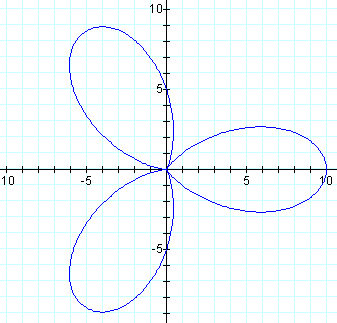
When a = b, we have a "k-leaf rose", often referred to in textbooks.
As long as the values of a and b are equal, the graph will not change shape, only size.
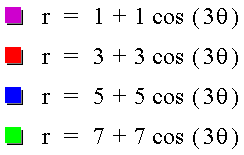
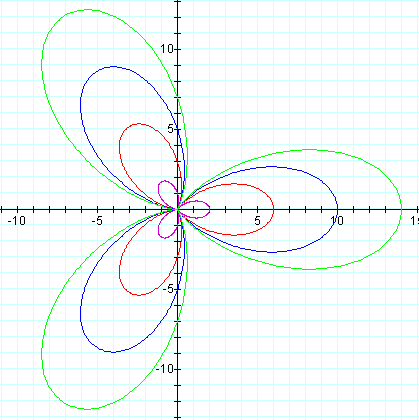
![]()
Now let's vary k:
![]()
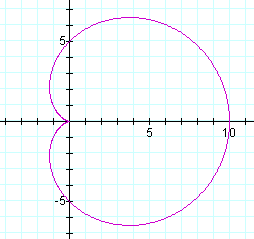
![]()
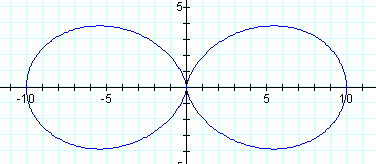
![]()
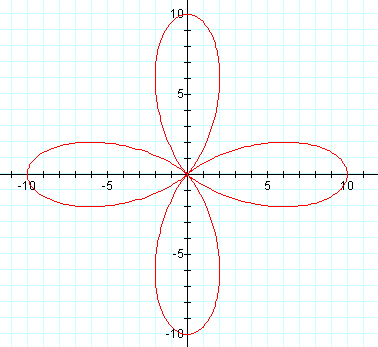
![]()
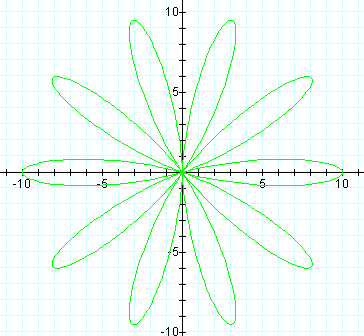
It is clear that varying k will vary the number of leaves or petals on your flower.
![]()
What if a ≠ b?
Let's first start with a = 0, so we are left with the equation
r = b cos (kθ)

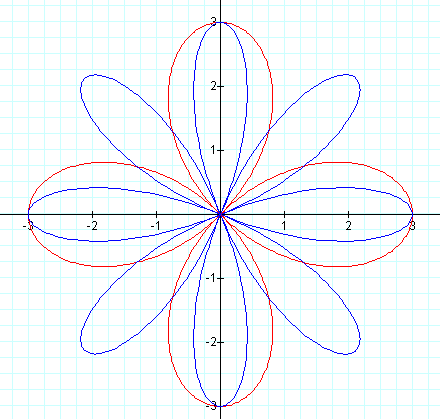
For even numbered k with a = 0, the number of leaves of the flower are actually 2k.
This is not the case with odd-number k, as soon below:
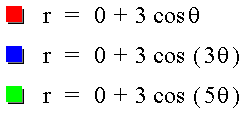
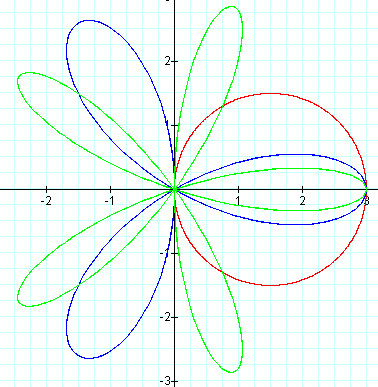
In the case of a = 0 and an odd-numbered k, we see that the first petal is centered around the x-axis (θ = 0) and has an amplitude of b. Also for an odd-numbered k, we see that there are k-leaves to the flower.
Notice that when k = 1, we have a perfect circle.
![]()
Now, let a≠b, with a and b both non-zero.
First, we'll try a case where a < b.
![]()
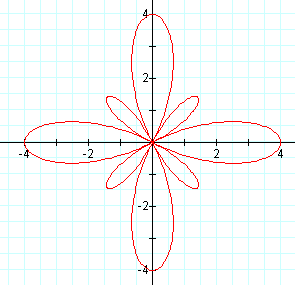
There are 8 loops (or 2k) loops. There are four major loops & four minor loops. The major loops have an amplitude of a + b, and the minor loops have an amplitude of b - a.
Let's look at one more case to make sure we're on the right track.
![]()
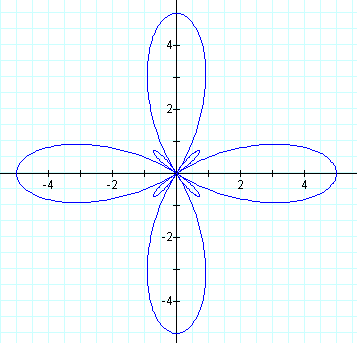
It looks like we're on the right track! The larger loops have an amplitude of 5, while the smaller loops have an amplitude of 1.
Now, let's look at a case where a > b.
![]()
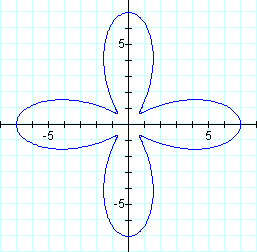
The loops no longer intersect at the origin and look more like petals now. The petals still have an amplitude of a + b. They intersect at a distance a - b away from the origin.
Let's look at a few more to be sure:
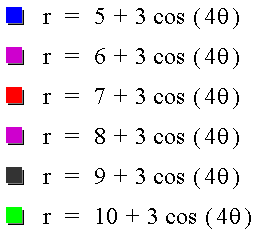
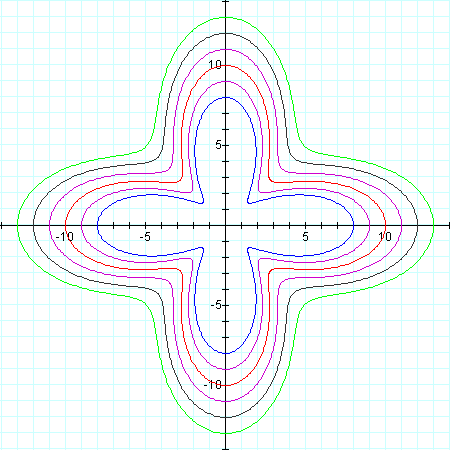
Looks like we have the right idea!
Another thing to note about this type of graph is that when k is odd, the secondary (smaller) petals appear inside the larger ones, instead of between them.
![]()
![]()
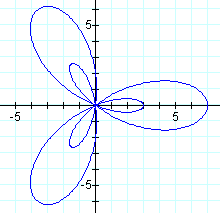
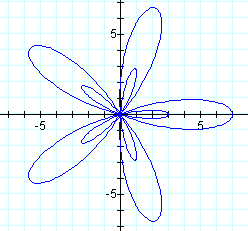
![]()
Let's look at one more investigation of this equation.
What if we changed cos θ to sin θ?
Here are a few graphs of interest:
![]()
![]()
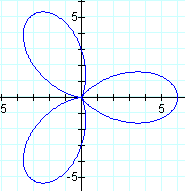
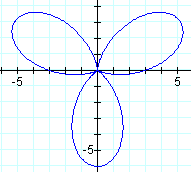
Changing cosine to sine made the first petal center around the -π/2 axis instead of the 0 axis.
Let's look at one or two more:
![]()
![]()
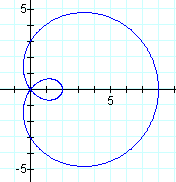
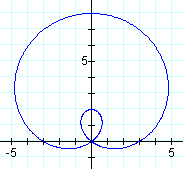
![]()
![]()
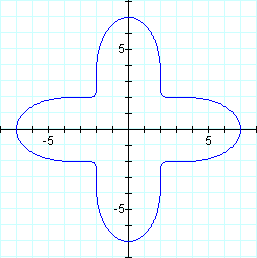
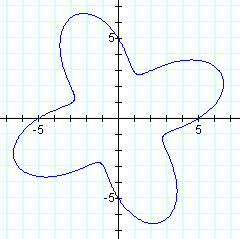
It looks like changing the cosine function to the sine function in the above graphs retains the shape of the original figure, but changes the orientation.
![]()
Return to my Home Page.
![]()